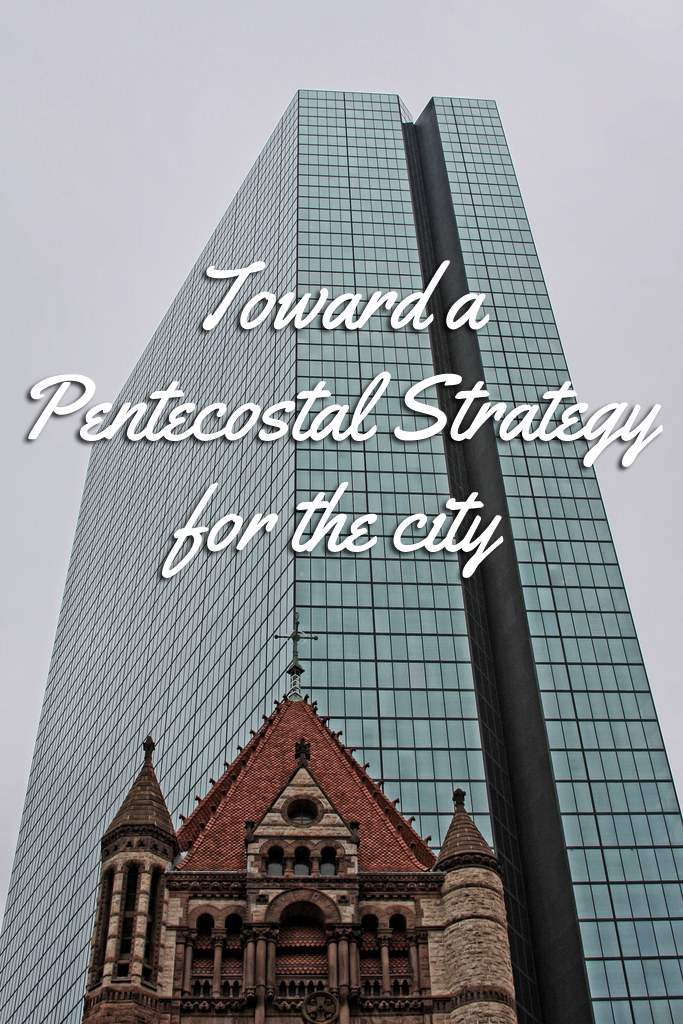Reflection on on U.S. Department of State recognizing the Bulgarian Chaplaincy Associations
Reflection on on U.S. Department of State recognizing the Bulgarian Chaplaincy Associations
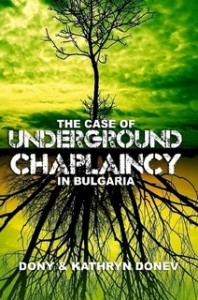 BREAKING NEWS [October 8, 2007]
BREAKING NEWS [October 8, 2007]
Original source archive: U.S. Department of State:
https://web.archive.org/web/20080709061910/http://www.state.gov/g/drl/rls/irf/2007/90168.htm
For immediate release: Bulgarian Chaplaincy Associations Recognized by U.S. Department of State
U.S. Department of State has released its annual International Religious Freedom Report for 2007. In the section about Bulgaria, the work of Cup & Cross Ministries has been noted through the recognition of the Bulgarian Chaplaincy Association.
Cup & Cross Ministries has worked toward the establishment of the Bulgarian chaplaincy Association since the year 2000. After five years of training chaplains, strategic professional placement and providing ministry in all respective areas of chaplaincy, in 2005 we began the process of registration with the Bulgarian government. This process was both difficult and a long test of our endurance. Although we were not openly denied registration under the 2002 Religious Act, various courts throughout Bulgaria hesitated and delayed our legal registration. Our ministry activities were closely watched and members of our staff were called in for interrogation on various occasions. After resorting to international human rights and religious freedom organizations, finally on February 23, 2007 the Bulgarian Chaplaincy Association received registration by the Sofia Municipality Court to become the first legal chaplaincy organization in Bulgaria officially recognized by the Bulgarian government. The current U.S. Department of State report overviews the above process. The direct quote of the report follows:
International Religious Freedom Report 2007
Released on September 14, 2007
http://www.state.gov/g/drl/rls/irf/2007/90168.htm
Section II. Status of Religious Freedom
Improvements and Positive Developments in Respect for Religious Freedom
Some religious denominations reported that the Religious Confessions Directorate had become more active in assuring that national and local authorities respect and promoted religious freedom and that the national government was more receptive to their concerns. For example, a Protestant group, the Bulgarian Chaplaincy Association, gained legal status on February 23, 2007. The association represents approximately 120 Protestant pastors and individuals mainly affiliated with the Church of God and Assemblies of God but also includes Baptists and Lutherans.
Almost three decades ago, we established the Bulgarian Chaplaincy Association with a vision for ministry in the Bulgarian army, Ministry of Internal Affairs, jail and prison systems, Bulgarian seaports and airports, and the healthcare system. Out of these five goals set before us in 2006 we have fulfilled them all:
1. Tolerant and equal representations of all confessions in the chaplaincy ministry
2. The implementation of a contextualized chaplaincy model
3. The integration of chaplaincy education in all Bulgarian theological higher educational institutions
4. And the educational and consultant work on government and church levels
except:
5. The establishment of legal grounds for regular paid chaplaincy service in the Bulgarian army, Ministry of Internal Affairs, jail and prison systems, Bulgarian seaports and airports, and the healthcare system.
After designing and teaching the Masters of Chaplaincy Ministry program in two major evangelical universities in Bulgaria, we now have some of our trained chaplains working in jails, prisons, healthcare, civil emergency services and the corporate/political level. The legal system in Bulgaria, however, is yet to provide the proper measure for restoring chaplaincy in Bulgaria’s armed forces. To this final step fulfillment we pledge out support in 2016.
Bulgarian Chaplaincy Association: Vision and Resolution
Bulgarian Chaplaincy Association
Resolution No. 1
We,
The founding members of the Bulgarian Chaplaincy Association in its first national assembly today August 19, 2006 in hotel Diana Palace, Yambol
In regard of:
1. Bulgaria’s membership in NATO and its upcoming integration in the European Union
2. The transformations within the Bulgarian Army from mandatory toward standard paid service and the participation of Bulgarian contingent in NATO and UN missions
3. Contract agreement for NATO airbases on Bulgarian territory
4. The strategic renewal of chaplaincy ministry in the Bulgarian army
5. And the present need of chaplaincy ministry integrated in the Bulgarian army, Ministry of Internal Affairs, jail and prison systems, Bulgarian seaports and airports, and the healthcare system,
Declare our support toward:
1. The establishment of legal grounds for regular paid chaplaincy service in the Bulgarian army, Ministry of Internal Affairs, jail and prison systems, Bulgarian seaports and airports, and the healthcare system
2. Tolerant and equal representations of all confessions in the chaplaincy ministry
3. The implementation of a contextualized chaplaincy model
4. The integration of chaplaincy education in all Bulgarian theological higher educational institutions
5. And the educational and consultant work on government and church levels.
We, the founding members of the Bulgarian Chaplaincy Association will work toward the renewal, popularization and equal religious representation of chaplaincy ministry in all professional areas.
August 19, 2006
Diana Palace, Yambol
NEEMIAH at the second oldest church in Polk County

Since our Revival Harvest Campaign with the theme of Nehemiah Experience began, we have been receiving miracles reports:
- a lady seeking for the Holy Spirit for some time now, was baptized late at night after the service and began speaking in tongues while on her bed
- heavy anointing to the point of people blacking out
- a truck driver came from the street to seek God
- a spontaneous Jericho march broke out with dramatic spiritual manifestation
- right arm hurt in a car accident many years ago, began feeling sensation in muscles and ligaments again during the service
- a clear direction was given by the Holy Ghost to remain faithful to the vision

Cookson Creek Baptist Church was established in 1836 and currently stands as the 2nd oldest continued church in Polk County. While the foundation and parts of the building are originals, the church has undergone many renovations throughout the years – one of the more recent being the stone, silo-shaped teenage Sunday School classroom. The church sits alongside the beautiful creek, after which it was named, and just down the road from Cookson Creek Cemetery.
The following accounts are recorded by Lynne McClary from the Polk County Chamber of Commerce.
The year was 1936 and Cookson Creek Baptist Church was celebrating it’s 100th anniversary in Polk County, Tennessee. N. B. Fetzer attended the festivities and later wrote about it from his Nashville home.
According to his writings, “There was an immense crowd . . . many of my relatives and old friends, but I missed many faces which used to show up there on May’s Fourth Sunday.” Thomas W. Mathis had been scheduled to give a historical review of the church, as his membership dated back some 70 years. Unfortunately, “Uncle Tommy was called to his heavenly home” on Wednesday prior to the celebration.
Fetzer’s note goes on to state that Miss Mae Ella Stinnett, who served as church clerk, was the ‘power behind the throne,’ and the highlight of the day came when a 3-1/2-year-old young man, the son of Tom Green, sang several stanzas to a “catchy mountain tune”. Fetzer could not remember the youngster’s name, but was told by an uncle that everyone called him ‘Tooter’.
This year Cookson Creek celebrates year 187. The building has undergone many renovations through the years; however the foundation, as well as some of the building itself, dates back to the construction in 1836! It sits alongside the creek for which it is named and just down the road from Cookson Creek Cemetery. The creek was named for Joseph Cookson, a white man who married Jennie Hildebrand. Jennie, who was half-Cherokee, was the daughter of Michael Hildabrand. Joseph and Jennie were moved to Oklahoma during the Cherokee removal of 1838 and lived their remaining lives on the reservation.
TAGS: Blue Springs Church, Beech Springs Church, Little Hopewell Church, Cookson Creek Church, Candies Creek Church, Good Spring Church
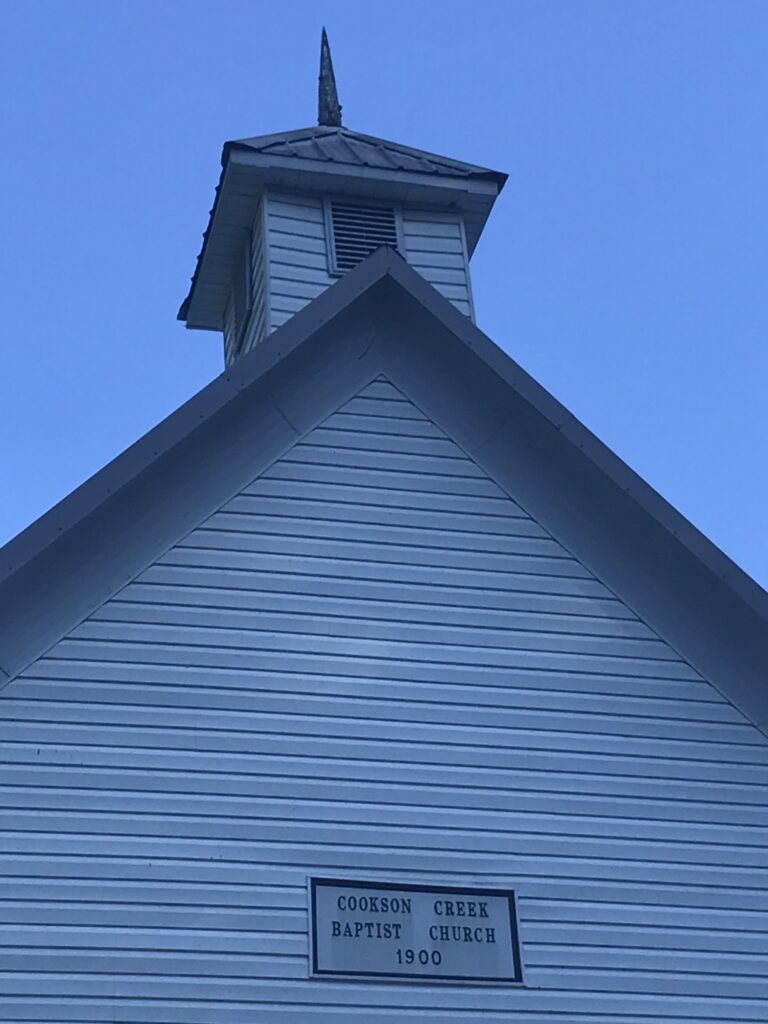
HISTORIC SITES OF POLK COUNTY
• Ocoee Indian Village, Hatcher farm. (Early Woodland, Yuchi, and Cherokee
Indians).
• Old Fort Block house, Benton, constructed 1805-1806.
• The Hildebrand House, Ocoee River, early 1830s; oldest house in the county.
• Friendship Baptist Church, First District, 1826, the oldest church in Polk County in
continuous operation. The Columbiana Presbyterian Church was organized in 1822
near Columbus and operated for about twenty years.
• Hiwassee Old Town, oldest and largest of the Cherokee villages in Polk County, was
located on the north bank of the Hiwassee River.
• Site of the discovery of copper on Potato Creek, 1843.
• James McNair family graves, Conasauga.
• Ducktown Basin Museum, Ducktown.
• Old Federal Road, 1804; the Old Stock Road; the Old Copper Road, 1853.
• The Savannah Farm, the largest and one of the oldest farms of the county.
• Columbus, north bank of the Hiwassee River, temporary county seat of Polk County;
had a post office by 1823 and was incorporated.
• Present day site of the Benton Department Store was site of the first home in Benton
(Four Mile Stock Stand); the home of James Lindner and his Cherokee wife, a
descendant of Nancy Ward.
• The Jacob Clemmer house at Benton was built in 1842 and is now owned by Mr. and
Mrs. Kenneth Bishop.
• The Nuchols home and office, (present site of The Drug Store), was built in 1868 and
was occupied in succession by Dr. J. D. Nuchols, Dr. J. G. C. Garner, and Dr. Joseph
E. Hutchins.
• Benton’s first hotel was on the site of Matt Witt’s Store, having been moved from
Columbus in 1840. It was operated by Commodore White, J. Q. A. Lewis, William
Higgins, and last by J. L. and Ben McClary.
• Maggie’s Mill located near Springtown, erroneously believed by some to have
inspired the song “When You and I Were Young, Maggie.” (Original site is in
Canada.)
• Great Indian War Path crossed the river at Hiwassee Old Town and continued
southward to Bridgeport, Alabama.
• The Cookson’s Creek Baptist Church is the second oldest church in the county, with
the Ocoee Baptist Church, Benton, third.
MISSIONS at the oldest church in Polk County
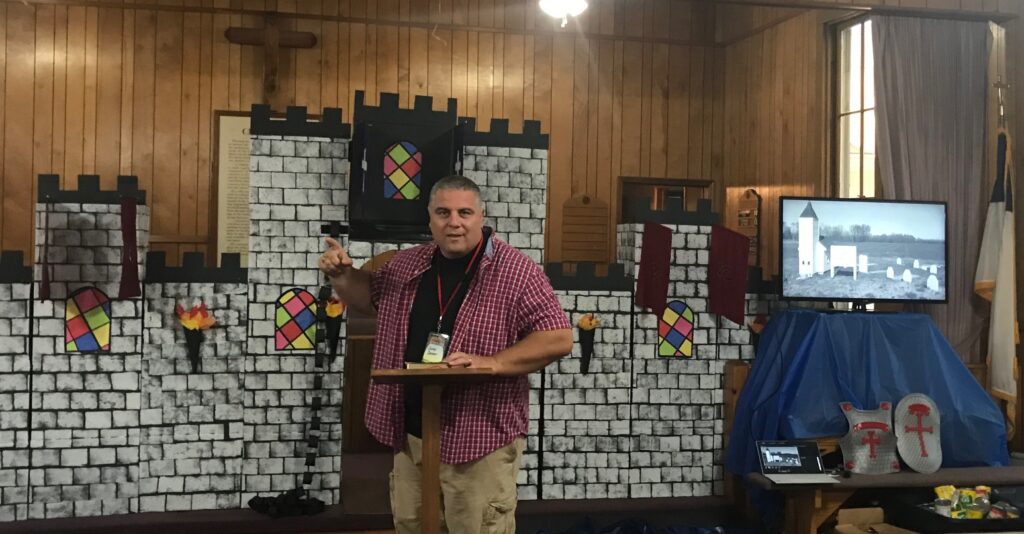
Friendship Baptist Church located in present-day Delano is Polk County’s oldest church in continuous operation – 1826-2026!
The following accounts are recorded by Lynne McClary from the Polk County Chamber of Commerce.
Started just 7 years after the Indian removal in the Hiwassee Cession of 1819, Friendship was near what was then known as Columbus. In June 1826, 10 men and women met in Brother Wilkerson’s home north of Coe Cemetery to organize a church. An ordination service was held July 1826 with members from Eastannallee Church.
Until December 1826, services were in the Wilkerson and Funkhouser homes. At which time a simple log church was built across the road from the present building. A cornerstone still remains of the original building. In 1819, land north of the Hiwassee was ceded to the US by the Cherokee, while the land south of the river to the GA line was not given up until 1838, meaning Friendship was established in free territory 12 years before the rest of present-day Polk County was even US Territory.
A frame church was built in 1856 north of the current building. Raised soil marks that site today. Calvin Denton pastored there 40 years, but little is known about Friendship through the Civil War due to loss of records.
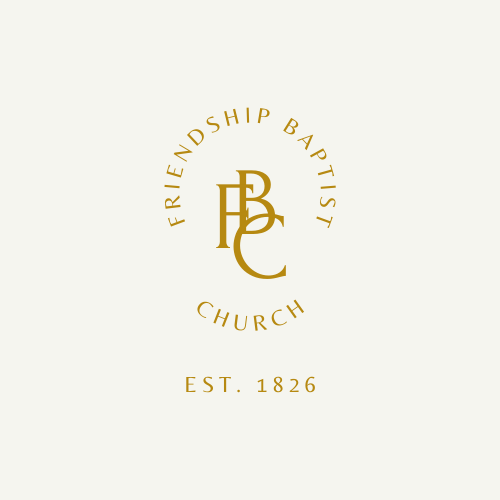 In the late 1800s to early 1900s the building was used as a school until the county could build one. A box dinner was held to raise money for a bell, used for both the school and church. This bell is the only remaining item from the school and it’s located in the belfry of the current church.
In the late 1800s to early 1900s the building was used as a school until the county could build one. A box dinner was held to raise money for a bell, used for both the school and church. This bell is the only remaining item from the school and it’s located in the belfry of the current church.
The current building was built in 1908, and Friendship’s 100th year was celebrated in 1926 with an all-day singing and history from JD Clemmer. During the celebration a group of Ku Klux Klan marched out of the woods in capes and hoods, went up one aisle, out the other door, and back into the woods, after which the celebration ended.
Friendship Church is an integral part of Polk County history, and future. There’s even a time capsule packed in 1976 scheduled be opened during 2026’s Homecoming.
In 1850 William Forest was licensed to be a Baptist minister ; he was ordained by the Friendship Baptist Church in Delano , Tennessee— where his father – in – law , Samuel Short , had been the first pastor– in 1857
|
FRIENDSHIP BAPTIST CHURCH POLK COUNTY, TENNESSEE |
||
| Friendship Baptist Church was established June 8, 1826, only seven years after the Indians were removed from the area under the Hiwassee Cession of 1819.That makes Friendship the oldest church in what is now known as Polk Co., Tn. Below is a list of the available names of Pastors and Church Clerks from 1826 to 1975. | ||
|
PASTORS |
||
| 1826- Samuel Short 1844- William Forest 1846- B. W. Buford 1849- C. Hoil, E. Newton, & J. Scarbrough 1850- Calvin Denton 1884- H. C. Cook 1888- C. H. Eaton 1889- J. R. Lawrence 1890- J. P. Fore 1891- Luke Shamblin 1893- W. H. Rhymer 1897- R. J. Womac 1903- J. M. Townsley |
1905- P. A. Miller 1906- J. W. Townsend 1912- S. R. Creasman 1915- J. M. Townsend 1917- H. K. Watson 1923- B. P. Kincaid 1924- J. D. Chastain 1925- Roy Thomas 1926- J. W. Townsend 1928- H.W. Passmore, Claude Green 1931- Will Shamblin 1938- M. C. Ledford 1940- C. Doyle Doss |
1945- W. G. Smiley 1946- Charlie Helton 1948- B. P. Kincaid 1949- C. R. Green 1953- Herman Matthews 1954- M. D. Berry 1956- Willie Choat 1960- Hobson Gregg 1965- Don Wilson 1968- Wayne Cooper 1969- Jimmy Hutton 1972- Garvin Chastain 1975- Jack Nunley |
|
Church Clerks |
||
| 1826- John M. Neal 1835- Edward Frather 1836- James Morris * 1879- W. C. Hatcher 1885- G. H. Burns 1885- W. C. Hatcher 1901- Mellie Hatcher Pennell 1910- W. F. Burris |
1911- A. J. Painter 1913- A. C. Howard 1919- Lee Blackwell 1923- E. S. Carruth 1926- James Mose 1929- Haden C. Davis 1939- Martha Watkins 1940- Hershell Davis |
1946- Ulysses Coe 1957- Maxine Eaves 1958- Barbara Lance 1960- Helen Allen 1961- Haroldean Wiggins 1966- Samantha Davis 1973- Wanda Carter |
|
Cemetery Listings |
||
|
Go to Section A Part 1 Go to Section A Part 2
|
||
*Some names are missing due to lost Church records. The information below came from a booklet titled” 150 Years Of Friendship”, by Terry Blair, Wanda Carter, Johnny Coe, and Deborah Williams. The booklet was handed out to to the congregation of Friendship at the July 4th Homecoming, a celebration of the 150th year, in 1976. Thanks to Connie Baumann for supplying this information!
A BAND OF BELIEVERS on the BANKS of BARNEY CREEK
By Dallas Bogan (Reprinted with Permission. This article was published in the LaFollette Press)
While many churches in the South had already established their existence and their doctrines, an invitation went forward to those who wanted to fully establish the readings and beliefs of the Bible as it was written. With this request a small group of nine believers formed the Christian Union on the banks of Barney Creek in Monroe County, Tennessee, on August 19, 1886. Activities of this joining together on a hot scorching day in the Unicoi Mountains in eastern Tennessee are not known to any degree, but their mission was fully accomplished. R.G. Spurling was selected as pastor of the church while Richard Spurling, his father, moderated the proceedings.
The small congregation knew it was futile to “reform” their own existing churches and so decided to “form” their own church. The intent was to re-establish sound scriptual doctrines of the Bible, and to promote evangelism and Christian service.
Barney Creek still remains a small stream that flows quietly through the mountains. Livelihood in this part of the Appalachian Mountains has still much to be desired. However, early folks in this part of the mountains who sought God found the New Testament Christianity and gathered to later become the Church of God, as we know it today. At a later time the experiences of sanctification and Spirit baptism were added.
This vision of Christian unification was the spiritual desire of R.G. Spurling and his father Richard Spurling, the former being a licensed minister in the Missionary Baptist Church.
Richard Spurling was an ordained elder and began to seek God regarding the abuses he saw in the local churches around him. He was quite perterbed concerning the spiritual neglect and ill treatment he witnessed in these congregations. He was also troubled with challenging traditions and creeds that he deemed a hardship for God’s people.
Calvin, Luther and other famous reformers had brought about many changes to the church such as a “right belief” rather than a “true relationship” with Jesus Christ. These gallant reformers’ changes concentrated more-or-less on creed rather than the leading of the Holy Spirit and one’s own principles.
The focal point of R.G. Spurling was Christianity and the law of love rather than creed or doctrine, in which the latter could possibly divide Christians. He believed that the New Testament was the “only infallible rule of faith and practice” and contains everything “necessary for salvation and church government.”
Spurling was a part of the broad re-establishment that moved through the church world in the United States during the 19th century. At this time, the Christian Union, similar to other groups such as the Churches of Christ and Churches of God (Anderson, Indiana), likened to reinstate New Testament Christianity. The New Testament was given different emphasis by these groups, but all wanted to restore some part of the apostolic church. Some of these groups focused on government, some on everyday life, some on the message, but all longed to return to contemporary Christian life, an important item that had been lost in the superseding centuries. Spurling saw in some teachings that a coarseness and individuality subdued the Gospel and led to dividing the body of Christ more so than to Christian unity.
A.J. Tomlinson, a friend of R.G. Spurling’s, wrote that Spurling preached whenever and wherever he had an opportunity. Tomlinson wrote that Spurling “in this way the minds of the people were continually agitated, and gradually prepared for the work of the Spirit that was to follow. For ten years this servant of God prayed, wept and continued his ministry against much opposition and under peculiar difficulties, before seeing much fruits of his labor.”
Benjamin Hardin Irwin acquired a more intense tactic to the Christian life and taught a “third blessing” called “the fire.” He structured, in Iowa, in 1895, the Fire-Baptized Holiness Associations, which later extended around the United States. During the next year he preached in South Carolina and Georgia. He had, by 1898, organized an international Fire-Baptized Holiness Association in Anderson, South Carolina, and during this time he had published a periodical called “Live Coals of Fire.” His message was heard and accepted in eastern Tennessee and western North Carolina where Spurling was ministering.
In 1896, persuaded by Irwin’s movement, four men began a revival in the Shearer Schoolhouse near Camp Creek in Cherokee County, North Carolina. William Martin, a Methodist, along with Baptists Joe. M. Tipton, Elias Milton McNabb, and William Hanby, preached a ten-day meeting that attracted much attention to the area. Tomlinson states that “they preached a clean gospel, and urged the people to seek and obtain sanctification subsequent to justification. They prayed, fasted and wept before the Lord until a great revival was the result.”
Twenty-one years after that infamous meeting at Barney Creek, and the formation of the Christian Union, the ever-growing movement would establish themselves as the Church of God. The beckoning call of the original Barney Creek meeting has now established a worldwide membership of over 5 million in more than 145 countries.
Reports of Church of God revivals find that hundreds are getting saved and filled with the Holy Ghost, more so now that at any other time. World evangelism is the call of the Church of God through descipleship and prayer, as well as committment.
Bulgaria gets new government
Bulgaria gets new government as former rivals enter uneasy alliance
SOFIA, Bulgaria (AP) — Bulgaria’s parliament on Tuesday formally approved the country’s new government proposed by the two main political rivals in a bid to end a 30-months-long political crisis, restore stability and spur economic development in the poorest EU member country.
The GERB party of ex-Premier Boyko Borissov, which won the April general election, and the runner-up, the pro-European liberal coalition “We Continue the Change – Democratic Bulgaria” have agreed to form the first-ever Bulgarian government where the post of prime minister will change hands halfway through.
Lawmakers voted 132-69 to elect Nikolay Denkov, a 60-year-old chemistry professor and former education minister, as prime minister. Denkov is a founding member of the reformist “We Continue the Change” party.
In a separate vote, legislators also approved the Cabinet, in which GERB’s Maria Gabriel, a former European Commissioner, will serve as deputy head of government and foreign minister. After nine months, Denkov and Gabriel will switch positions for the rest of the term.

The 300 CHURCH
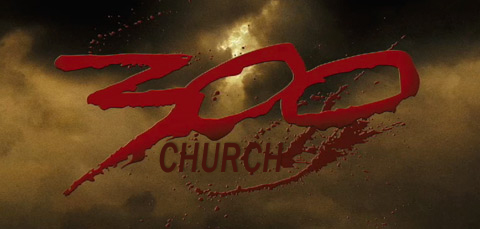
160,000 Pentecostals in Bulgaria Reported by the NEW Encyclopedia of Global Pentecostalism

25 Years ago, I left D.C. and Never Looked Back…

5th postpandemic elections in Bulgaria for an expert-government
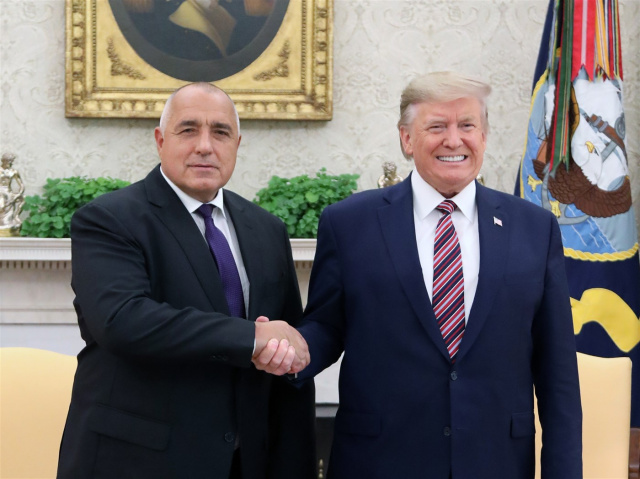
- exPM Borissov wins (26.51%) once again with a mere 1.5% lead
- CHANGE political formation follows closely with 24.54%
- None have enough to form a majority government and will be forced to seek political coalition
- Merely 1/3 of Bulgaria’s population voted, tired of now 5 consecutive elections since 2021 without a wining ruling party or actual government formed as following:
- 2021 April National Parliament election
- 2021 Second National Parliament election
- 2021 Third National Parliament and Presidential elections
- 2022 October elections for 48th National Assembly after the fall of a four-party coalition in June 2022.
- 2023 Fifth National Parliament elections
CEC data as of 5:55 p.m. with 100% of sectional protocols processed in the Regional Election Commissions show that six political formations will enter the 49th National Assembly: GERB – SDS, WCC-DB, “Vazrazhdane”, DPS, BSP and ” There Is Such a People”.
GERB – SDS have 26.51%, or with a 1.93% lead over WCC-DP, which received 24.54% of the votes. The difference between the two leading coalitions is 49,769 votes.
The GERB-SDS coalition improved its result and received 34,734 votes more than in October last year. Now there are 669,361 people who voted for them.
Nearly 2 percent lag behind the first and second according to the results are “We Continue the Change – Democratic Bulgaria” (WCC-DB). They gathered the support of 619,592 voters, but compared to October last year, a drop of nearly 74,000 votes was reported, as the two formations then gathered the total support of 692,000 voters. If we add the percentages of the two formations from October, they are 27.6 percent, but already as a coalition they achieve a 3 percent lower result.
The third political force in yesterday’s elections is the “Vazrazhdane” (Revival) party with 14.15%, followed by the Movement for Rights and Freedoms (DPS) with 13.72% and the Bulgarian Socialist Party (BSP) – with 8.94%.
“There Is Such a People” (TISP) also entered the new parliament, with the party receiving 4.11% of the vote. The trend of the “Vazrazhdane” party, which from the fourth to the third political force, is upward. Now, compared to October, it adds another 102,000 votes to its result, with 357,167 people voting for the formation yesterday.
The results for DPS, compared now and from last year, mark a drop of almost 2 thousand, and the party from third is now fourth. In October, more than 344,000 people voted for DPS, and 346,437 did so a day ago.
For BSP – fifth in terms of results, the support is also falling – from 233 thousand in October to 225 thousand now, which is minus 7 thousand votes.
103,641 voters voted for the sixth formation, which with a high degree of probability falls into the 49th National Assembly – “There Is Such a People”, and in the previous elections, when Trifonov’s party failed to cross the 4 percent barrier, the support was 96 thousand.
The “Bulgarian Rise” party – had 3.08% and the coalition “Levitsata!” (The Left) remain below the 4 percent barrier. – with 2.24%.
Central Election Commission data with processed 100% protocols in the Regional Election Committees of the country
34 Years after Communism…
34 years in 60 seconds at the red-light…
I’m driving slowly in the dark and raining streets of my home town passing through clouds of car smoke. The gypsy ghetto in the outskirts of town is covered with the fog of fires made out of old tires burning in the yards. And the loud music adds that grotesque and gothic nuance to the whole picture with poorly clothed children dancing around the burnings.
The first red light stops me at the entrance to the “more civilized” part of the city. The bright counter right next to it slowly moves through the long 60 seconds while tiredly walking people pass through the intersection to go home and escape the cold rain. The street ahead of me is already covered with dirt and thickening layer of sleet.
This is how I remember Bulgaria of my youth and it seems like nothing has changed in the past 25 years.
The newly elected government just announced its coalition cabinet – next to a dozen like it that had failed in the past two decades. The gas price is holding firmly at $6/gal. and the price of electricity just increased by 10%, while the harsh winter is already knocking at the doors of poor Bulgarian households. A major bank is in collapse threatening to take down the national banking system and create a new crisis much like in Greece. These are the same factors that caused Bulgaria’s major inflation in 1993 and then hyperinflation in 1996-97.
What’s next? Another winter and again a hard one!
Ex-secret police agents are in all three of the coalition parties forming the current government. The ultra nationalistic party called “ATTACK” and the Muslim ethnic minorities party DPS are out for now, but awaiting their move as opposition in the future parliament. At the same time, the new-old prime minister (now in his second term) is already calling for yet another early parliamentarian election in the summer. This is only months after the previous elections in October, 2014 and two years after the ones before them on May 2013.
Every Bulgarian government in the past 25 years has focused on two rather mechanical goals: cardinal socio-economical reforms and battle against communism. The latter is simply unachievable without deep reformative change within the Bulgarian post-communist mentality. The purpose of any reform should be to do exactly that. Instead, what is always changing is the outwardness of the country. The change is only mechanical, but never organic within the country’s heart.
Bulgaria’s mechanical reforms in the past quarter of a century have proven to be only conditional, but never improving the conditions of living. The wellbeing of the individual and the pursuit of happiness, thou much spoken about, are never reached for they never start with the desire to change within the person. For this reason, millions of Bulgarians and their children today work abroad, pursuing another life for another generation.
The stop light in front of me turns green bidding the question where to go next. Every Bulgarian today must make a choice! Or we’ll be still here at the red light in another 25 years from now…
Toward a Pentecostal Strategy for the City
Toward a Pentecostal Strategy for the City
One of the questions that seems to come up in this course discussion is how to change the world around us with a more positive and effective approach toward using the Gospel of Salvation. In this particular module, the difficulty addressed is ethnocentricity. The particularity of our search then arrives at the more detailed question, how can we change the culture (respectively subcultures) of our church congregations? This is a drastic move from a closed circle toward an outreach community that many congregations are unable to accomplish. How do we then empower such congregations to be transformed into cultural reach-outs to a single ethnos or multiple ethnic groups?
Problem
The problem in the first quarter of the 21st century has been incongruity of our church strategy with the times we live in and the mindset they occupy. We’ve been preparing the church for the multicultural battle, all and while we should have been equipping the saints how to rebuild the walls since the battle has been lost.
We’ve been equipping leaders for the ministry while the church ship has been sinking only to end up with well trained captains of a sunken fleet. And in a doomed attempt to reconcile the reality of the ministry with their training, they have turned to wave walkers who briefly surface for breaths of fresh air during Sunday worship only to return to the deep blue walk of their daily ministry never finding their lost piece of eight.
For the battle was lost long ago before the present generation of ministers ever came to existence. They know not the battle. They’ve only seen the ruins that were left within the broken walls of the church. And they have been struggling to reconcile the incomputable of what church eldership has been teaching them to battle against with the Nehemiah calling for restoration, which God has placed upon them. For the answer has never been in building a New Jerusalem for a fresh start, but restoring the old Jerusalem and its former glory to a new state that reclaims our history and heritage.
Context
Recent analysis of migrant churches in the United States reveals that the predominant majority of them are located in cities which have a high influxation and concentration of immigrants. Such localities are called “gateway cities”. Immigrants typically enter the United States through one of these cities and settle there. These areas contain over half of the foreign-born population in the United States as follows:
- New York, NY – Foreign born population 18.7%
- Los Angeles, CA – Foreign born population 27.1%
- Houston, TX – Foreign born population 12.3%
- Washington, DC – Foreign born population 8.6%
- Miami, FL – Foreign born population 33.6%
- Chicago, IL – Foreign born population 11.1%
- San Francisco, CA – Foreign born population 20.0%
Strategy
Asking the right questions is important, but the answers cannot be generic for all ethnic groups or cultural settings. There is a strong need to be flexible and observe changes in culture, but not to change the message of the Gospel or compromise our witness. Several common things are noted in any cultural setting where our ministry is involved:
First and foremost, people of all cultures prefer to be personal with a purpose, rather than being project driven. No one longs to be part of someone else’s project. Yet, our very existence demands personal purpose, which could serve as a great cultural catalyst in a church ministry.
Secondly, cross cultural ministry is not done merely on relationships, but on being real in the relationships. The greatest halt of ministry work is when people realize the relationship with the church has not been a real one, but merely a part of a program or a paradigm.
Finally, our cross cultural model for ministry should not be just salvation oriented, but soul oriented. There is a great difference between writing down the number of saved every Sunday and actually caring for the eternal well-being of the saved souls. In fact, this is so fundamentally determinative that it should be the goal in mind of every new church plant.


